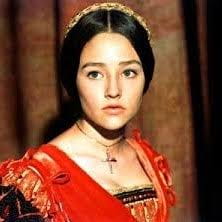You may be thinking, if you have visited my blog before, that we did a whole unit on Romeo and Juliet last year. Why in the world would I be writing a blog post about a year-old project? That is exactly what I am here to chat with you, My Dog Ate My Bloggers, about in my second Jordyn’s Thoughts Weekly Post. In our new humanities project, we are studying Shakespeare’s Taming of the Shrew and the connection it has to the treatment of women. What I have been thinking about a lot this week is how Shakespeare portrays the role of women in his other plays? Not just that, what roles do women and even men have in the plays? I studied the Tempest in Grade 8 and Romeo and Juliet in Grade 10, but as you could probably guess from the title, today I will be looking into the way women are presented in the one, the only, Romeo and Juliet.
*Important note: When talking about the role of women, especially in Elizabethan times, it is important to look at the role of men to! Compare and contrast people, compare and contrast! So I will be mostly talking about gender roles, or, may I say, the lack of them 😉
If you want to learn about Romeo and Juliet and watch my class’s rendition of the play, check out my post for a bit of background information!
Is This Gnomeo and Juliet or Leonardo DiCaprio and Claire Danes?🎭
Romeo and Juliet was written some time between 1591 and 1596, a time when a woman’s sole purpose in life was literally to live for men. Woman were basically in a whole separate social class. Women cooked, cleaned, cared for children, did not speak out, and made men feel like men. Men fought, socialized, and showed zero emotion, other than anger. It was that simple! If you followed societies standards, the Elizabethan era would have been a breeze. But for our main characters, Romeo and Juliet, that would not be so. With a little bit of research and closer examination of the characters and storyline, it is actually really easy to see that the two star struck teens actually broke gender norms.
Romeo
Let’s start with Romeo. “Oh, speak again, bright angel, for thou art/ As glorious to this night, being o’er my head/ As it is a wing’d messenger of heaven.” (2.2.27-29) *sigh* the famous balcony scene. Romeo calls out to Juliet from below her as you can see in the picture below:

How romantic…. and also something that would never ever had happened in Romeo and Juliet’s time! Since when does a man ever put himself below a woman? Never! This is an outrage! (At least in Elizabethan times). This would have been quite the sight to see as Romeo is not only standing below Juliet, he is showing emotion and speaking softly, poetically which are considered much more feminine qualities . Romeo also has a reputation of crying A LOT, he is a very emotional guy and that’s ok but this definitely defied his masculinity at the time as you can see from this quote by friar Lawrence: “Hold thy desperate hand!/Art thou a man? Thy form cries out thou art./Thy tears are womanish; thy wild acts denote/The unreasonable fury of a beast/Unseemly woman in a seeming man.”(3.3.112-116)
Juliet
Now for Juliet, who challenges what it meant to be a woman in one very large, significant way. “Hang thee, young baggage, disobedient wretch!/ I tell thee what: get thee to church a Thursday/ Or never look at me in the face.” (3.5.166-168)
 This is the response Juliet gets when she personally decides she will not marry Paris. This is a big deal because women, specifically girls, are to be submissive to their parents, but she breaks away from the stereotype. Another very important example of Juliet being, what would be considered a Shrew, is the conversation she has with her mother about marriage. “Now, by Saint Peters Church, and Peter too/He shall not make me there a joyful bride/ I wonder at this haste, that I must wed/Ere he that should be husband comes to woo/I pray you tell my lord and father madam/I will not marry yet, and when I do I swear/It shall be Romeo….”(3.5.121-127) A woman and her family’s goal in life was for her to be married, almost always to the man chosen for her. To turn down marrying Paris and then marry their mortal enemy, was very brave and defined Juliet’s femininity.
This is the response Juliet gets when she personally decides she will not marry Paris. This is a big deal because women, specifically girls, are to be submissive to their parents, but she breaks away from the stereotype. Another very important example of Juliet being, what would be considered a Shrew, is the conversation she has with her mother about marriage. “Now, by Saint Peters Church, and Peter too/He shall not make me there a joyful bride/ I wonder at this haste, that I must wed/Ere he that should be husband comes to woo/I pray you tell my lord and father madam/I will not marry yet, and when I do I swear/It shall be Romeo….”(3.5.121-127) A woman and her family’s goal in life was for her to be married, almost always to the man chosen for her. To turn down marrying Paris and then marry their mortal enemy, was very brave and defined Juliet’s femininity.
This is a side of a Shakespeare’s Romeo and Juliet that I never looked into or even thought about his year. But after learning a little bit about The Taming of the Shrew, I got to thinking. To see Shakespeare create characters that almost switched gender roles or at least took opposite gender norms, was something that would not happen in his time, the Elizabethan era. I find it really interesting and I am really glad I got to do a bit of research about it. After completing this blog post, next week I cannot wait to take what I learned about analyzing quotes and poetry, into my Taming of the Shrew work!
Sources
https://papersowl.com/examples/the-theme-of-gender-being-shown-in-romeo-juliet/
https://www.bartleby.com/essay/Gender-Roles-in-Romeo-and-Juliet-by-F3PNQSZTJ
https://studydriver.com/romeo-and-juliet-gender-roles/



Leave a Reply